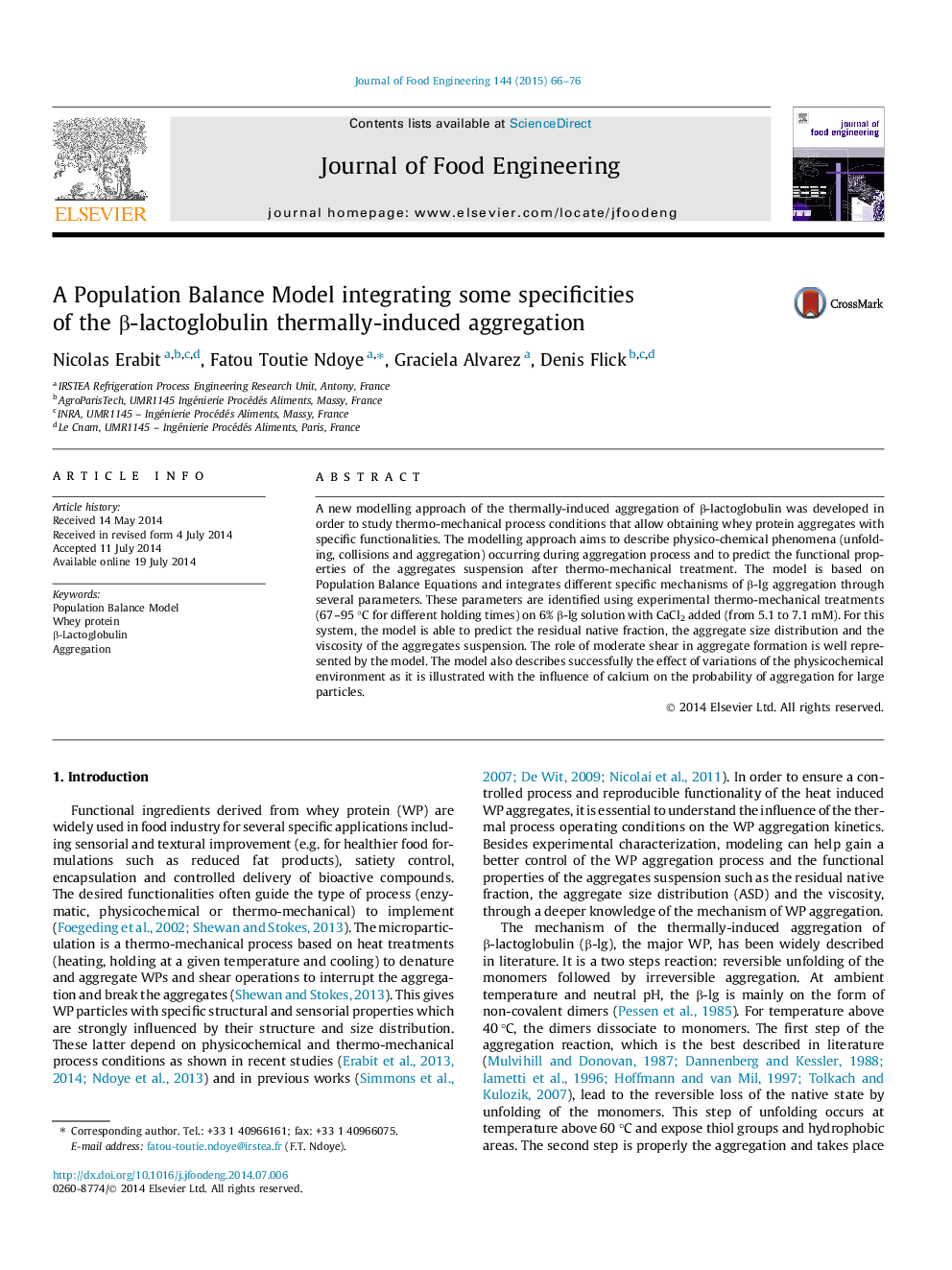| کد مقاله | کد نشریه | سال انتشار | مقاله انگلیسی | نسخه تمام متن |
|---|---|---|---|---|
| 223008 | 464322 | 2015 | 11 صفحه PDF | دانلود رایگان |

• A new modelling approach using Population Balance was developed.
• Specific mechanisms of β-lg aggregation were integrated to the model.
• Residual native fraction, aggregate size distribution and viscosity were successfully predicted.
• Effects of different operating conditions were well represented by the model.
• The model could be valuable for whey protein aggregation process design and optimisation.
A new modelling approach of the thermally-induced aggregation of β-lactoglobulin was developed in order to study thermo-mechanical process conditions that allow obtaining whey protein aggregates with specific functionalities. The modelling approach aims to describe physico-chemical phenomena (unfolding, collisions and aggregation) occurring during aggregation process and to predict the functional properties of the aggregates suspension after thermo-mechanical treatment. The model is based on Population Balance Equations and integrates different specific mechanisms of β-lg aggregation through several parameters. These parameters are identified using experimental thermo-mechanical treatments (67–95 °C for different holding times) on 6% β-lg solution with CaCl2 added (from 5.1 to 7.1 mM). For this system, the model is able to predict the residual native fraction, the aggregate size distribution and the viscosity of the aggregates suspension. The role of moderate shear in aggregate formation is well represented by the model. The model also describes successfully the effect of variations of the physicochemical environment as it is illustrated with the influence of calcium on the probability of aggregation for large particles.
Journal: Journal of Food Engineering - Volume 144, January 2015, Pages 66–76